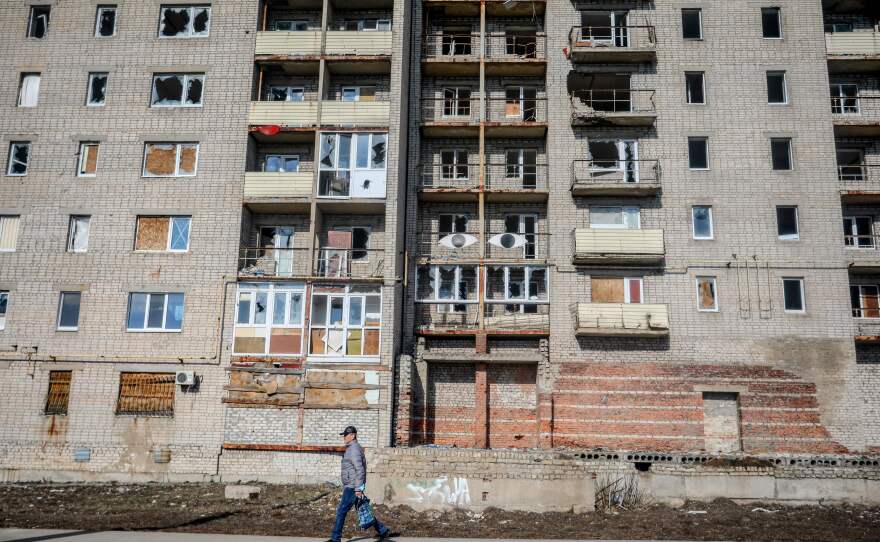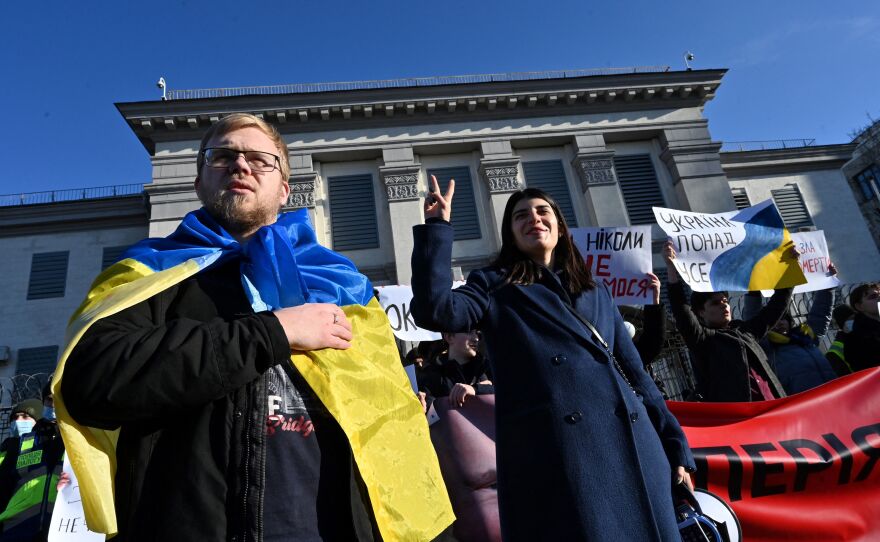In the latest flare-up of the crisis in Ukraine, Russian President Vladimir Putin on Monday recognized the independence of two breakaway regions in Ukraine's east as independent and ordered military forces to deploy there.
The rebel-controlled territories, Luhansk and Donetsk, comprise a larger region called Donbas that borders Russia. The two territories have been led by pro-Russia separatists for nearly a decade.
Experts warn that Putin's order for troops to carry out what he called "peacekeeping functions" in the region — and what President Biden has now called the start of an invasion — could lay the groundwork and provide the pretext for a larger Russian military incursion into Ukraine.
To understand why Luhansk and Donetsk are playing such a central role in the conflict's most recent escalation, it's worth going back to the popular uprising that kicked off the current unrest in Ukraine, which has been simmering since 2013.
The Maidan revolution led to a major political shift in Ukraine
In November of that year, then-Ukrainian President Viktor Yanukovych announced he would refuse to sign an agreement with the European Union to bring Ukraine into a free trade agreement, citing pressure from Russia.
The move sparked massive protests in Ukraine calling for Yanukovych to resign. In February 2014, violence between police and protesters in Kyiv's Maidan square left dozens dead; Yanukovych eventually fled to Russia and the Ukrainian parliament established a new government.
Loading...
Greeting the new government and Yanukovych's ouster as a coup, Putin sent troops into Crimea, a former Soviet republic that had been part of Ukraine since 1954.
Within days, Russia annexed Crimea — despite international pressure from the U.S. and European allies — following a referendum that apparently resulted in 97% of voters choosing to join Russia, though the results are disputed.
In April 2014, fighting began northeast of Crimea across the Sea of Azov, in another pro-Russian stronghold called Donbas.
Separatist factions in Luhansk and Donetsk emerge emboldened
Clashes soon broke out between pro-Russian rebels in Donbas and Ukrainian military forces, with about 40,000 Russian troops stationed just across the border. (In a similar warning to his more recent overtures, Putin said at the time that Russia had no intention of invading Ukraine and that it would only send troops into the country if necessary.)
Critics have accused Russia of aiding in the insurgency in eastern Ukraine, though Moscow has denied it.
By late April 2014, Ukraine's interim President Alexander Turchinov said the government had lost control of the eastern part of the country.
What followed were years of tense relations between the Ukrainian government in Kyiv and the self-described Donetsk People's Republic and Luhansk People's Republic.

A 2014 referendum in the region found strong support among residents for secession from Ukraine, and a national presidential election in the spring was marred by obstruction and in some cases violence in the breakaway east, as clashes continued.
Later, Ukraine's government decided to grant the separatist regions self-rule and give the militants amnesty, though the move stopped short of declaring the regions fully independent. It was a major concession from the government, though some separatists said it didn't go far enough. On-again, off-again fighting continued even as both sides agreed on a cease-fire.
The conflict in eastern Ukraine continues today
The violent power struggle in eastern Ukraine, though at times reduced to a low boil, never really ended.
In 2019 Ukrainian President Volodymyr Zelenskyy met with Putin for face-to-face peace talks on the continuing violence in eastern Ukraine, but the discussions didn't lead to a long-term solution.
More than 13,000 people have died as a result of the conflict and more than 1.5 million were displaced, according to the Council on Foreign Relations.

Now the threat of major violence is looming again.
U.S. officials said that a recent warning from Denis Pushilin, the leader of the self-proclaimed Donetsk People's Republic, of an impending attack by the Ukrainian military was nothing more than a "false flag" operation meant to sow unrest. Russian state media have also accused Ukraine's military of killing civilians, though again there is no evidence to back up their claims.
Western powers say they support Ukraine's sovereignty and have provided the country with military equipment for self-defense, but they haven't sent their own troops to beat back the Russian advance.
Rather, now that Biden has called Russia's latest move an invasion, Western powers are responding with sanctions they hope will end any further escalations in Ukraine.
Copyright 2022 NPR. To see more, visit https://www.npr.org. 9(MDAzMjM2NDYzMDEyMzc1Njk5NjAxNzY3OQ001))






